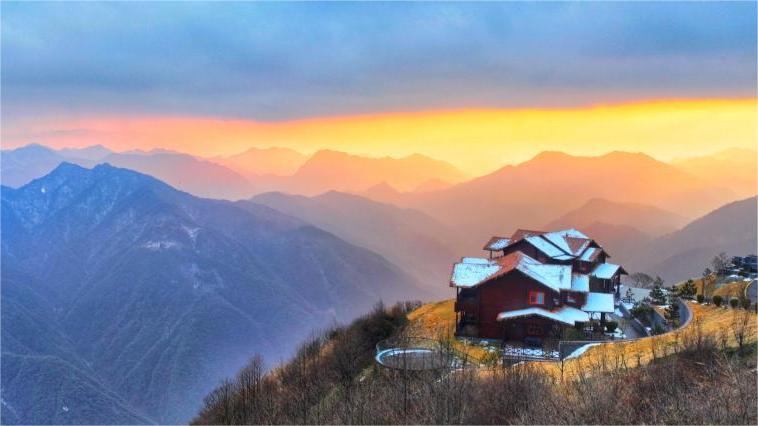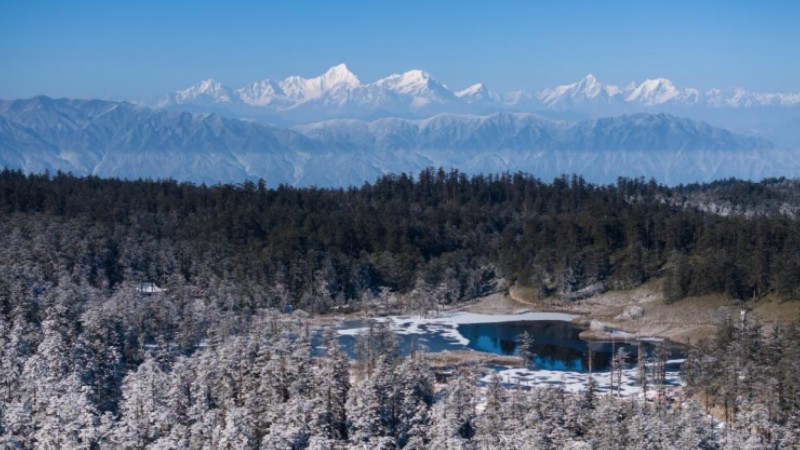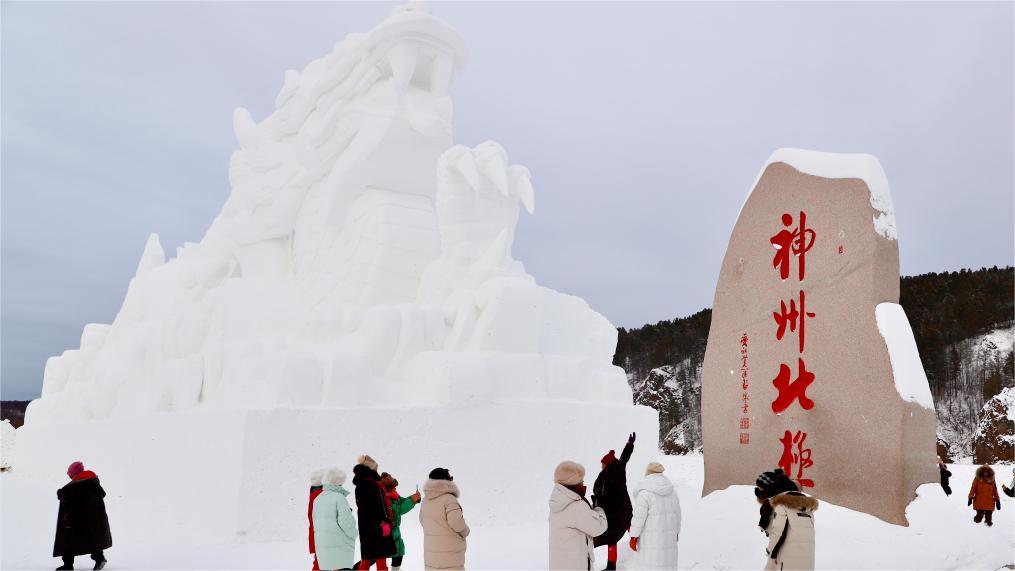Former desert land transformed into oasis for relocated villagers
YINCHUAN, Dec. 26 (Xinhua) -- Liu Kerui said it was a dream come true when he moved into a livable home in the Hongsibu District of Wuzhong City, northwest China's Ningxia Hui Autonomous Region. The development of the district began over 20 years ago for people relocated from many parts of the impoverished Xihaigu area in the south of Ningxia.
Liu's courtyard house was built with government support and is a comfortable home with electric appliances and running water, as well as a kitchen, flushing toilet, water heater and heating system. He also has a cattle hut in his backyard.
More than two decades ago, government in Ningxia launched a large-scale relocation project, moving people from desolate, sparsely populated regions in the south of the region to the central area of Hongsibu, where they would be able to work together to seek common development.
Over the last 20-plus years, more than 200,000 people like Liu have been relocated there from Xihaigu area, and they have since witnessed the construction of a modern city and modern agricultural infrastructure.
But when the first group of these people arrived in Hongsibu, they had their work cut out for them as it was still a part of the Gobi Desert. The area is located at the base of Luoshan Mountain, which rises high amid a vast plain and is the third-largest mountain in Ningxia.
The popular TV series "Minning Town" was released in 2021 to tell the story of the people of Hongsibu. The show described the area they arrived in as a place where grass could not survive, where no birds cared to visit, and where the ground was only sand and stones.
People relocated to Hongsibu in earlier days had to adapt to the unlivable environment. Many elderly people remember that their bowls and cups were always full of sand and dirt due to frequent sandstorms.
In 1995, the government launched a huge project to pump Yellow River water into the area, constructing a multi-stage channel approximately 50 kilometers in length. The river water was pumped to a height of 300 meters -- the height of a 100-story building -- to supply irrigation facilities.
At the same time, the local government launched a forestation campaign to plant 1.24 million mu (about 82,667 hectares) of trees to fend off desertification and protect villages and towns.
Agricultural and industrial infrastructure has been built where nothing existed before, and a wide variety of commodities are produced locally today -- wines, goji berries, daylilies, beef, mutton, green power and textiles.
At a large fruit and vegetable greenhouse farm, locals now plant produce throughout the year using soilless cultivation equipment and technology, thanks to investment from businesspeople in east China's Fujian Province.
"We are building a three-dimensional planting structure in order to increase production and efficiency," said Li Qi, director of a greenhouse project in the Fujian-Ningxia industrial park. The project has equipment worth a total of 6 million yuan (over 845,000 U.S. dollars), Li added.
Liu Sisheng, 50, works at the greenhouse farm. He is in charge of five greenhouses and has earned 50,000 yuan over three months of harvests. "The company has improved management by helping us purchase seeds and fertilizers, and by selling the products for us."
Ningxia is an ideal wine production area thanks to its dry environment and sufficient sunshine, and Hongsibu is catching up with other parts of the region in the field of winemaking.
At wineries in Hongsibu, employees can always be seen selling products online, and deals totaling 20,000 bottles can be made in just five minutes of livestreaming.
With vineyards occupying 108,000 mu of its land, the district now has 22 wineries producing 15 million bottles of wine annually, worth a total of 700 million yuan.
"Our winery produces 130,000 bottles, or 100 tonnes, of wine each year. We have opened a branch in Fujian Province, where wine sells very well," said Lyu Zhenjie, a manager at the Pengsheng Zhenlu Wine Mansion.
And it is not only local industry that has improved -- local education has also advanced to become more forward-looking.
Many of the first group of people relocated to Hongsibu were illiterate or semi-literate. Now, they are watching their children and grandchildren graduate from colleges and even universities in big cities.
Hongsibu high school was established 20 years ago and has since been nurturing future college students, with the number of students enrolling in colleges seeing an annual increase of 10 percent over the past three years.
This is the result of the construction of a comprehensive education system in the new district, which now has 144 schools of various kinds, and all children complete their compulsory education years.
The district has also built a comprehensive health care and elderly care system, which has eased the difficulties faced by the aging population.
Photos
Related Stories
Copyright © 2023 People's Daily Online. All Rights Reserved.









